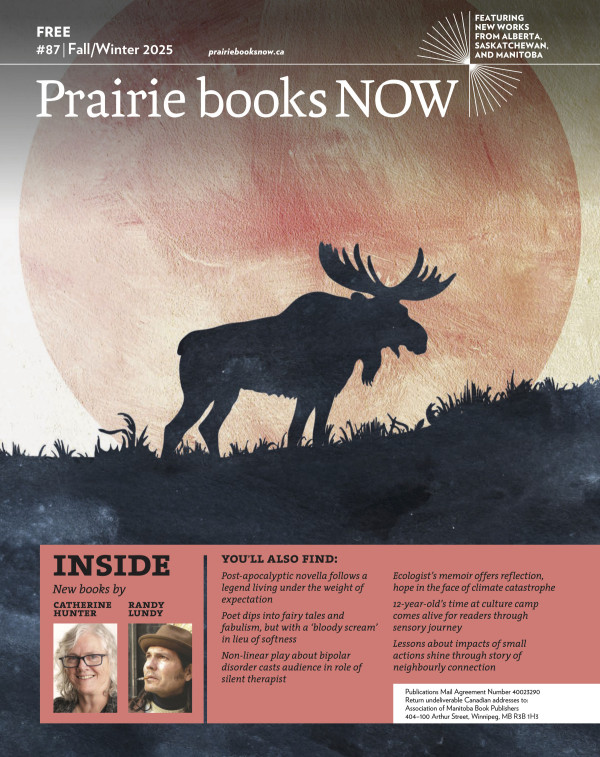Su Croll is an acclaimed poet and now, in her debut novel Seeing Martin, she turns her observant eye on Mira – an art student grieving the death of her father – along with photographer Marie Claire Zorn and Martin Zorn, Marie Claire’s brother.

- Seeing Martin
- Su Croll
- Pedlar Press
- $24.00 Paperback, 288 pages
- ISBN: 978-19-89424-04-9
The result is a suspenseful account of an unusual triangle, and a visual feast as Mira constantly observes, draws, and paints the world around her. References to the art she studies compulsively, such as Francis Bacon’s “screaming popes” series, add a deeper dimension to the narrative.
“I have always been drawn to art and to visual culture of all kinds. Certainly, my time in drawing classes as well as studying art history, film, and photography was influential on Seeing Martin,” Croll comments.
“I was able to have my characters care deeply about or embody artists I like: Diane Arbus, Betty Goodwin, Robert Frank, Francis Bacon, and Jana Sterbak, the creator of the notorious ‘meat dress,’ to name a few.”
Seeing Martin is set in Montreal in the 1980s, and Croll, who has lived in Quebec, knows it well. “A good portion of Seeing Martin takes place in the winter, and I tried to incorporate the power of weather and its effects on both plot and character,” she remarks. The icy sidewalks and the bone-chilling cold are marvellously rendered, as are the cafés and studios where nearly everyone smokes.
Among the usual forms of narrative are lists of Marie Claire’s photographs, excerpts from her notebooks, reviews of her gallery showings, and a short screenplay that holds the key to the trauma that destroyed her. The reader is thus absorbed fully into the world of the Zorns and Mira.
Marie Claire’s contact sheets are particularly revealing, an unusual way of telling the story.

“Have you noticed how literal many photographers are when they title their photographs?” asks Croll. “I thought it was intriguing that when a list of titles is strung together, a story begins to emerge, almost automatically.”
Croll partially based the character of Marie Claire on American photographer Diane Arbus. “In my research, I read how Arbus put herself in what I consider dangerous situations to get her pictures,” she says.
In a similar way, Marie Claire follows potential subjects to their homes to photograph them. She considers herself immune from danger. She obsessively takes Martin’s picture for over 20 years, and shows those pictures in galleries and publishes them in books, thus making her artistic career.
Croll says that “Martin is quite porous, quite emotionally permeable. He is, for whatever reason, profoundly affected, traumatized even, by his sister’s years of relentless photographing.”
He finds Mira and their sexual relationship a haven of calm; Mira finds in it a release from the burden of grief.
Both Mira’s and Marie Claire’s relationships with Martin reveal the obsessive nature of artists.
“Marie Claire, like Mira, like so many artists, is ravenously image hungry,” says Croll. “She needs to get the image and she doesn’t care what she has to do to get it.”













